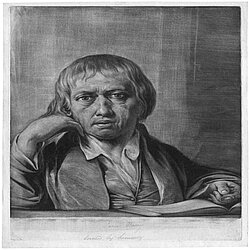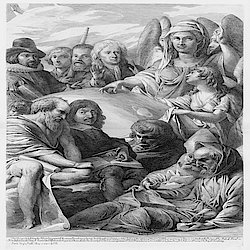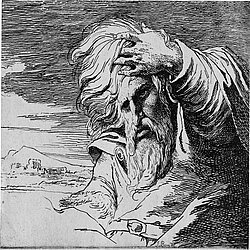Loading the page ...
James Barry
1741 Cork – 1806 London
The young James Barry’s first historical paintings attracted the attention of the Irish author and philosopher, Edmund Burke, who invited him to London in 1764. Burke introduced the budding artist to Joshua Reynolds and Gilbert Stuart and paid for him to study in Rome for a number of years. After returning to London, Barry exhibited two paintings on biblical and mythological themes at the Royal Academy in 1771 and 1772, both of which were poorly received by the critics. Although the lack of recognition accorded to his works meant he received no commissions for quite some time, he was nevertheless admitted to the Academy in 1773. In 1775 Barry published An Inquiry into the Real and Imaginary Obstructions to the Acquisition of the Arts in England, a provocative essay directed primarily against Winckelmann’s classical theory of art. Barry remained an eccentric and visionary artist throughout his life. He was a loner in his time and spent the last years of his life in complete isolation and abject poverty. His historical paintings, distinguished by the outstanding originality and extravagance of their iconography, are imbued with an unconventional, sombre lyricism which anticipates the aspirations of the Romantic period.
Archive



